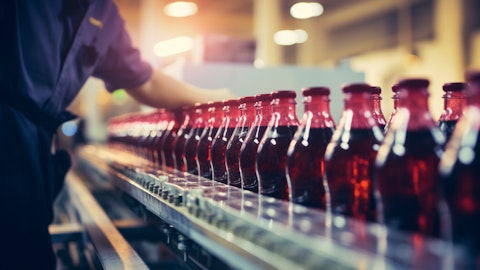There’s a particular tension that ripples through markets when growth cools but costs don’t, like a car trying to coast with the parking brake still on. The U.S. global trade standoff, especially with China, has helped shift that tension from speculation to reality.
Since January 2025, average U.S. tariffs on all imports have climbed from a historic 2.5% to roughly 15.8% as of June, levels unseen in over a century. China has matched move for move: its retaliatory levies on U.S. goods peaked at 125%, then eased to 10% in a fragile 90‑day Geneva truce struck May 12. Yet beneath that headline reduction lies a layered tariff regime: baseline 10% general duties, 20% “fentanyl” tariffs, 25% Section 301 penalties, meaning effective rates remain at 55% on Chinese-made goods. And there’s little certainty: in July, the White House signaled that baseline rates could swell to 15–50%.
The economic backdrop is no mere backdrop; it’s a storm front. Yale researchers estimate these 2025 tariffs alone shave 0.7 percentage points off U.S. GDP and push consumer prices up by ~1.7% in the short run, burdening households to the tune of $2,800 apiece. Invesco, echoing global strategists, warns these distortions elevate recession risks daily and inject serious volatility into risk assets. Meanwhile, analysts at ICG predict U.S. growth languishing near zero this year, perhaps even flirting with recession, but note that most developed economies might dodge outright contraction.
Markets, ever the mood ring, have responded unpredictably. The S&P 500 recently hit fresh highs, fueled by a blend of AI optimism, momentum buying, receding fears of all‑out trade escalation, and whispers that President Trump may retreat – again – from tariff brinkmanship. But beneath the rally’s glow flicker warning lights: Goldman Sachs is sounding a correction alarm, pointing to frothy sentiment, aggressive retail inflows, and signs of job‑market fatigue.
Corporate earnings offer a mixed tale. Industrial names like RTX are flagging, citing $125 million in tariff cost hits and cutting profit forecasts even amid solid demand. By contrast, 3M recently trimmed its exposure estimate and raised its forward guidance on the back of tariff relief to just $0.10/share, boosting investor confidence. Even Tesla warned of a “rough patch”, but blamed fading EV incentives and tariffs as much as flagging demand.
Put it all together: we’ve got stalled growth, sticky inflation, volatile markets, sharply elevated tariffs, and a corporate landscape that’s slicing into two camps—those exposed to global input costs and those unburdened by cross-border trade. It’s the perfect inferno for defensive, trade‑insulated names.
With that backdrop, let’s head to the list of best trade-war-resistant stocks to buy.

Nonwarit/Shutterstock.com
Our Methodology
For our list, we narrowed down to stocks in the consumer staples industry that had pricing power, margin durability, strong brand moat and inelastic demand, and whose supply chains had lower dependence on China. From these, we selected the ones with the highest number of hedge funds holding stake in them as of Q1, 2025.
Why are we interested in the stocks that hedge funds pile into? The reason is simple: our research has shown that we can outperform the market by imitating the top stock picks of the best hedge funds. Our quarterly newsletter’s strategy selects 14 small-cap and large-cap stocks every quarter and has returned 373.4% since May 2014, beating its benchmark by 218 percentage points (see more details here).
10. Unilever PLC (NYSE:UL)
Number of Hedge Funds: 30
Unilever PLC (NYSE:UL) is one of the best trade-war resistant stocks to buy now. In July 2025, Unilever appointed three senior legal executives from within the company to lead the legal transition of its €8.6 billion ($9.3 billion) ice cream business as it prepares to spin the unit off under the name Magnum. The move shows Unilever’s preference for internal continuity during one of its most complex restructurings in years.
The new legal leadership includes Vanessa Vilar as Chief Legal Officer, Palmina Fava as Chief Integrity Officer and General Counsel for Ben & Jerry’s, and Natalia Cavaliere as General Counsel for the Americas. All three have spent years at Unilever and bring deep institutional knowledge to a unit that has faced legal and political scrutiny, particularly due to tensions between Unilever and Ben & Jerry’s board over governance and social responsibility issues.
The separation is part of a wider cost-saving and simplification effort that includes laying off 7,500 staff and narrowing focus to core segments: beauty, personal care, home care, and nutrition.
Known for global brands like Dove, Hellmann’s, and Surf, Unilever has remained resilient in volatile macro conditions, taking advantage of pricing power and deep operational infrastructure. The legal handling of the ice cream spin-off shows the company’s intent to manage internal tensions while moving decisively on its restructuring roadmap.
9. Kimberly-Clark Corporation (NASDAQ:KMB)
Number of Hedge Fund Holders: 45
Kimberly‑Clark Corporation (NASDAQ:KMB) is one of the best trade‑war resistant stocks to buy now. On July 25, 2025, JPMorgan analyst Andrea Teixeira maintained her Underweight rating on KMB while cutting the price target from $126 to $125, citing persistent trade‑tariff pressures and margin constraints that could limit near‑term upside potential.
That caution is well‑grounded. In April 2025, Kimberly‑Clark revised its annual profit outlook downward, warning of roughly $300 million in new costs this year stemming from U.S. import tariffs, which have pushed total cost of goods sold to be around $500 million higher than in 2024. Despite largely domestic manufacturing, supply chain complexities tied to trade tensions are weighing on profitability and organic growth.
Kimberly‑Clark is also finalizing a $3.5 billion sale of its global tissue business (excluding North America) to Brazilian pulp maker Suzano, as part of its broader refocusing efforts amid these macro pressures.
Kimberly‑Clark produces well-known brands like Kleenex, Huggies, Scott, and Kotex. While tariffs and escalating trade costs challenge margins, the company’s defensive household staples, brand equity, and recent restructuring moves provide a buffer.





